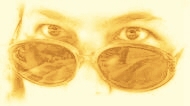REQUIEM BY FIRE
(fiction)
by
Wayne Caldwell
(Author of CATALOOCHEE)
www.waynecaldwell.com
ADVANCE COPY!
Published by
Random House
(www.randomhouse.com, www.atrandom.com)
Note:
Copyright 2010
by
Owlhead, Inc.,
Wayne Caldwell, prop.
Publication date:
March 2, 20010
On sale date:
February 23, 2010
ISBN: 978-0-4000-6344-4
Price:
$25.00 USA
NOTE: Canadian price unknown at review time.
Ah, Mr. Caldwell. I was not disappointed, as I have been so many times by the second novels of authors! I am indeed impressed. And I thank you for the dual read.
Mr. Caldwell has, in REQUIEM BY FIRE, produced another fine novel. It is a sequel to CATALOOCHEE. In REQUIEM BY FIRE, we follow once again the fascinating saga of family and home in the Appalachian region taken in as part of the Great Smoky Mountains National Park. We're offered a highly realistic glimpse of what it must have been like for those who lived there, and what it must be like for their descendents to look back on their much-changed heritage.
I began reading about these families in CATALOOCHEE, and when I opened up the advance copy of this novel, I hardly dared hope for the same sure touch of a genuine storyteller. This book is a triumph of the art, but more so a triumph of a son of the land. We Appalachian folk are survivors, highly adaptable and tenacious.
All I can say to Mr. Caldwell is that I would be proud to have you -- or any of your cast of charactors, in fact -- as a neighbor. Folks like you write about are getting all too rare. Keep 'em coming. I'll read 'em, and gladly so.
This book is the genuine article. See for yourself. Read the first one, too!
Special thanks to The Random House Publishing Group, who provided this book for review free of charge to the independent reader.
For more book reviews, please visit The Fireside Reader at http://thefiresidereader.blogspot.com .


